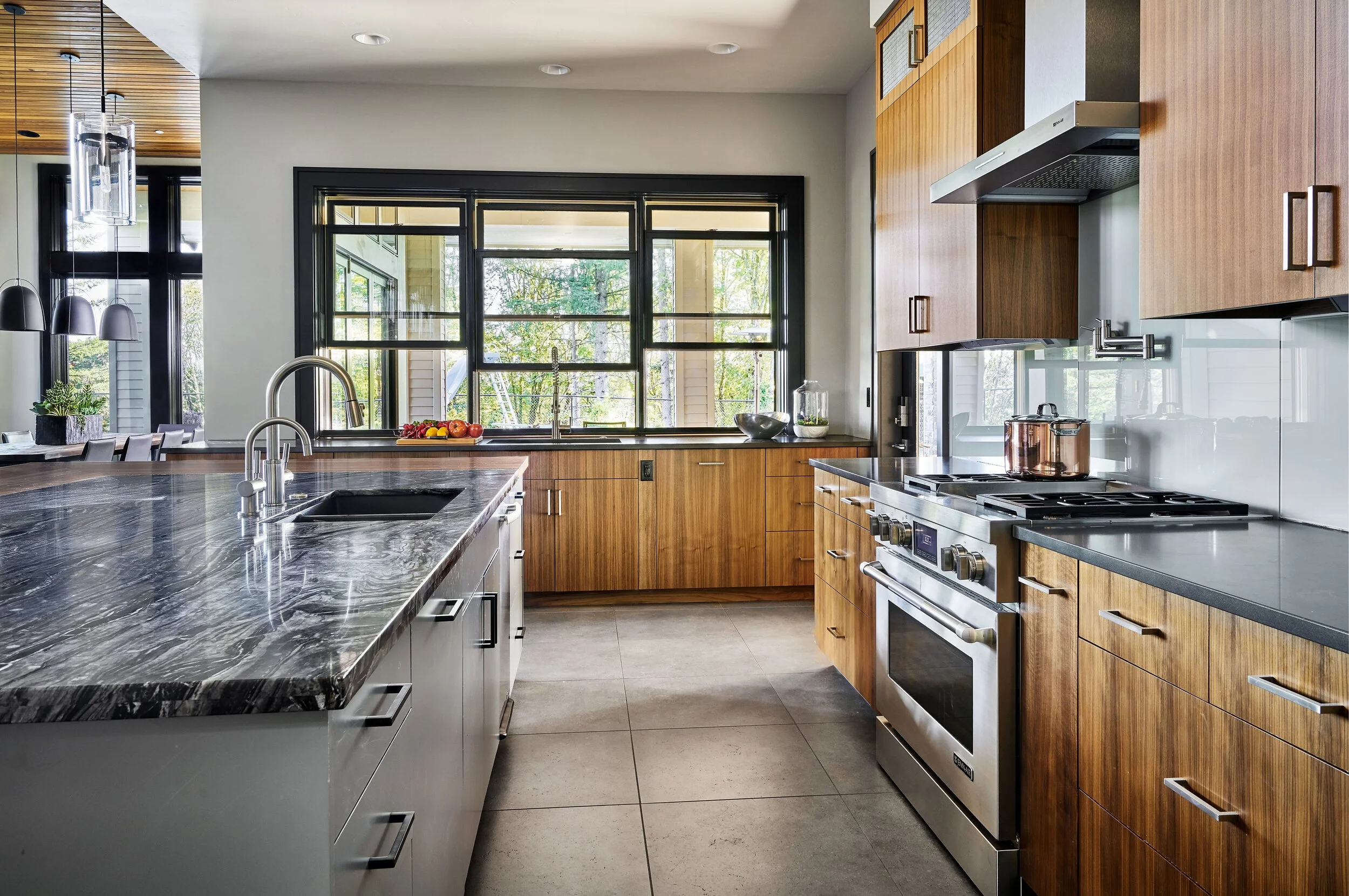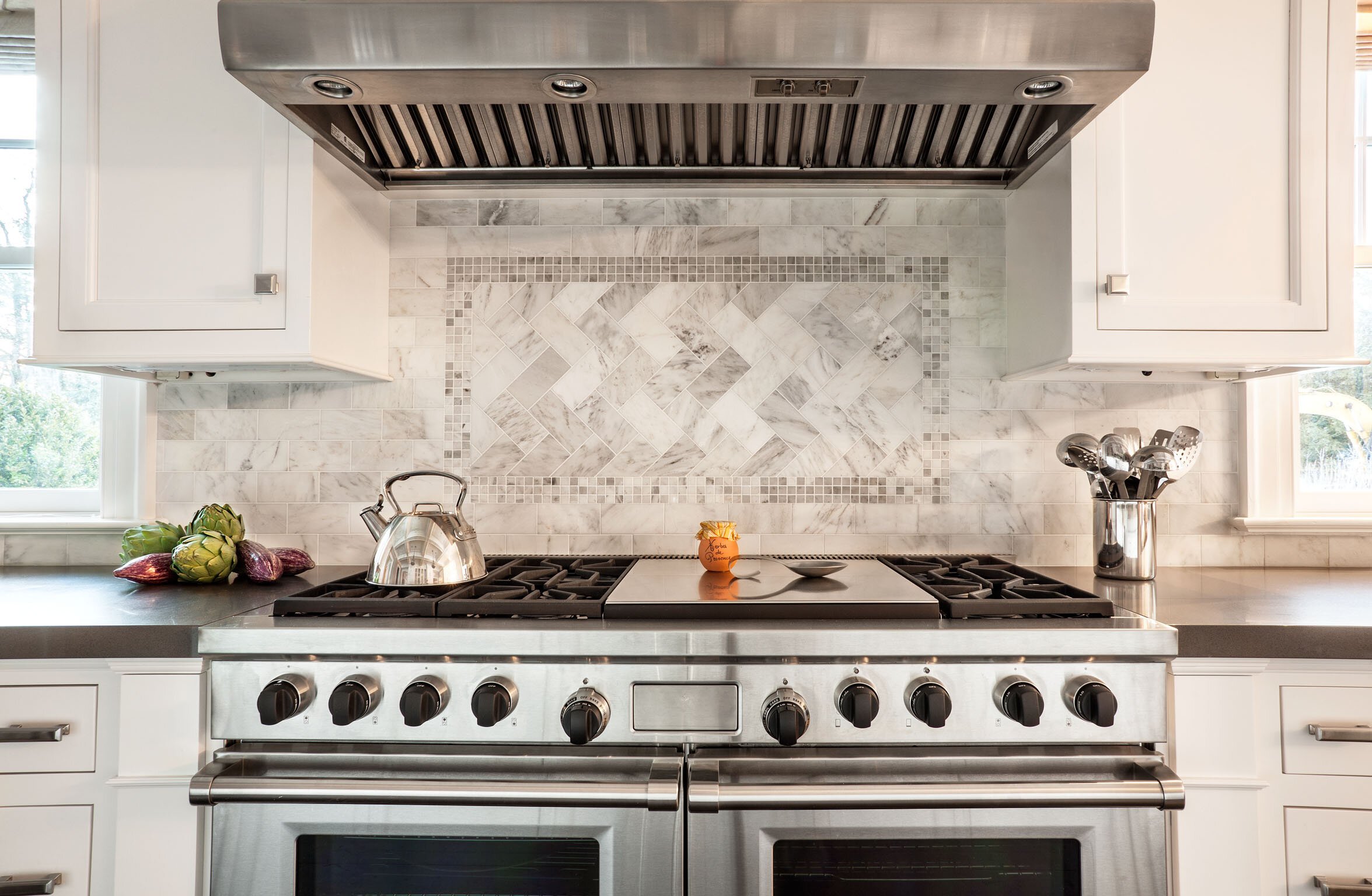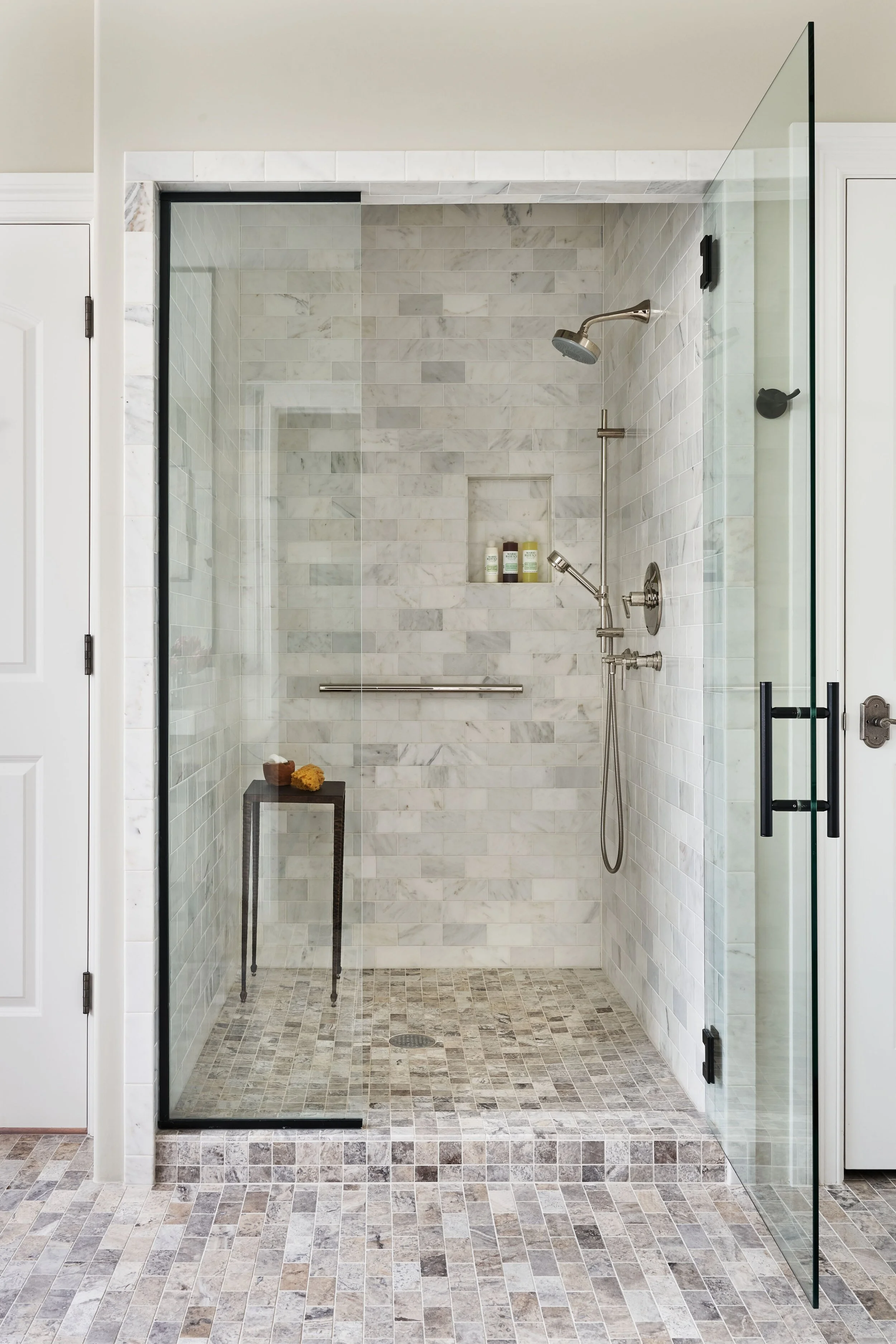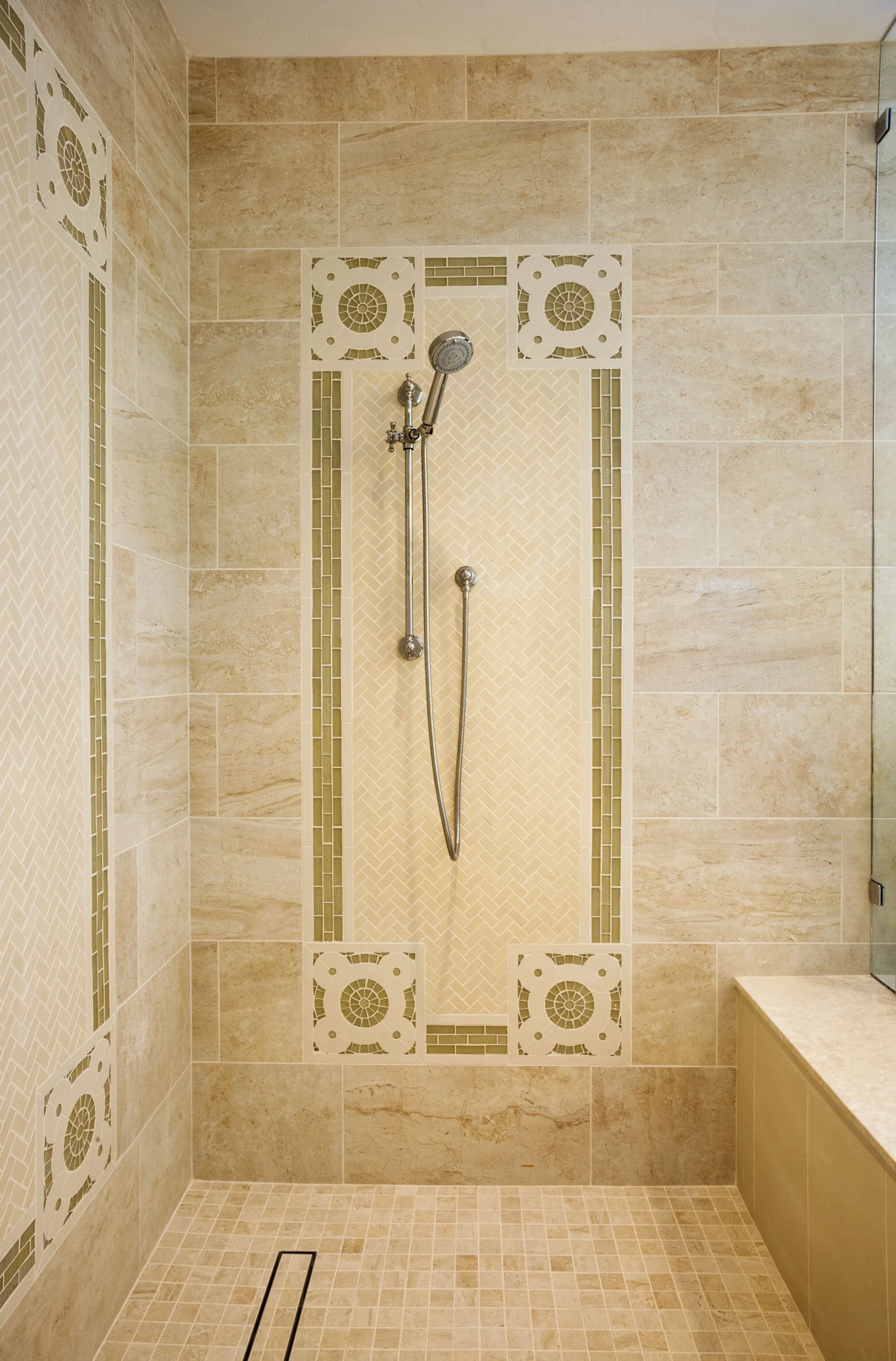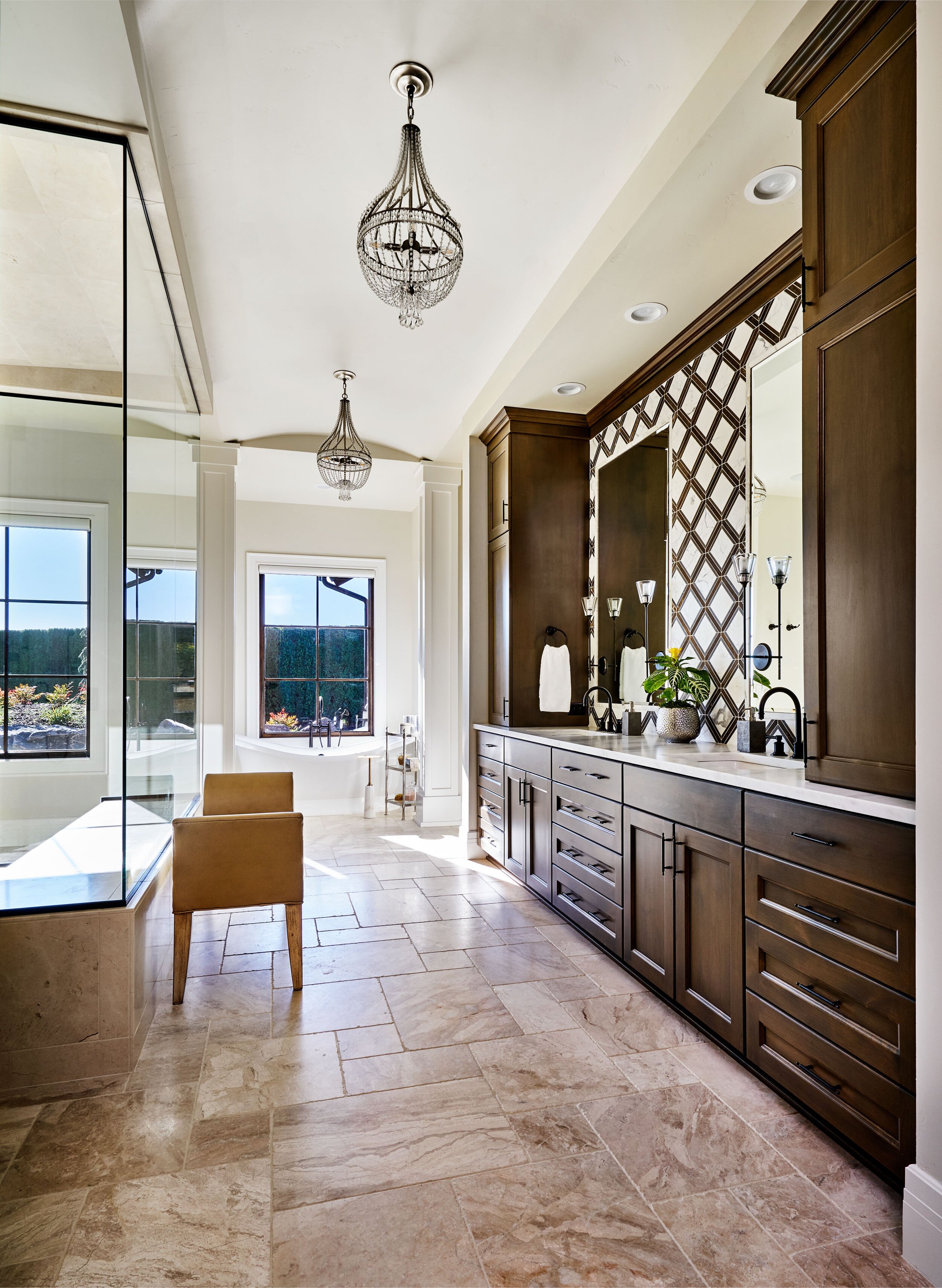Real vs. Faux Stone
We often find ourselves having the age-old debate…real vs. faux stone. Both options have found their way into our projects—and both options have their place in design. Below we outline some of our favorite projects and types of products that will always have a place in design and construction.
Stacked stone:
Stacked stone is often found on exterior applications and interior statement walls or fireplaces. Its coloration, variation, and texture bring interest and beauty to any design.
Natural stone anchors this beautiful outdoor fireplace and column supports.
Real Stone: stacked stone is mined, quarried, or collected from fields and represent the beautiful colors and textures of Mother Nature. The material is porous, requires more prep and cutting by a mason, and can be installed in a dry-stack or mortar method. The cost varies per the variety of stone and where it is coming from (local quarry or from a quarry outside the state). However, there is typically a larger investment in a real stone installation.
Natural stone is installed on the fireplace in this rustic traditional living room.
Cultured (faux) stone compliment the Pacific Northwest contemporary vibe in this living room.
Faux Stone: cultured (faux) stone is fabricated with concrete and composite materials in molds to give the impression/look of actual stone. There are a variety of options out on the market…some that are more convincing and some that are less convincing; typically, this is the result of coloration and patterning techniques. Most often, cultured stone is easier to install and costs less (both for material and installation). It too, can be installed in a dry-stack or mortar method.
Natural stone and cedar siding add to the beauty of this GHID designed custom home
Cultured stone in a dry-stack method compliment the warm color palette of this NW home.
Slab Stone:
Slab stone is most commonly used as countertop material. However, it is also suitable for fireplace surrounds, in showers, as exterior cladding, and as statement focal points.
Marble frames the opening of this traditionally classic white apron front sink. Although softer and more porous than other stones, with proper care and caution, marble can look beautiful in a kitchen setting.
Real Stone: slabs of real stone are quarried from the earth. Common materials are marble, granite, limestone, travertine, limestone, soapstone, and quartzite. Each option has specific densities, colors, heat exposure limits, patterns, etc. that make it suitable for particular applications. For instance, because marble is a softer stone, often lighter in color, and porous, it can sometimes be problematic in kitchen spaces (staining and etching). However, granite is harder and resists staining and etching to a greater degree. All-natural stones, because they are porous, do require sealing and upkeep. It will be important to review particular properties, functional needs, and characteristics with your designer/slab yard as you choose your unique stone slab.
Black granite adds contrast and durability in this Hampton inspired kitchen.
Faux Stone: quartz material, also referred to as engineered stone, is a fabricated slab that mimics the look of natural stone. Quartz slabs come in an array of colors, patterns, and finishes to help fit any design scheme. The material itself is comprised of a high percentage of grounded quartz/granite material and a resin binder. As a result, the product is non-porous and a favorite of clients and designers. It is important to understand the limitations of the product. For example, some quartz cannot be used outside as the heat/UV from the sun can damage the resin binder in the product. Also, there are many manufacturers on the market (both domestic and foreign) that have quartz products. Quality can be a concern. Make sure you work with your designer and fabricator to choose a product that is right for your project and application.
A dark marble island is flanked my engineered (quartz) stone on the perimeter.
A granite island is complimented by a light and subtle quartz countertop.
Tile Stone:
Tile stone has created endless design opportunities. The product is often used as tile backsplashes at kitchens, shower surrounds in bathrooms, flooring surfaces throughout, fireplace surrounds, and for exterior cladding. It is fabricated in large sizes, different shapes, and small mosaics.
A beautiful marble backsplash in a running bond, herringbone, and mosaic style compliment the traditional white cabinets and stainless steel appliances.
Real Stone: similar to slab countertops, real stone tile is quarried/mined and fabricated to particular sizes and shapes. Each stone family (marble, granite, limestone, etc.) have certain priorities that make it suited better for particular applications. If you are a client that prefers each tile being unique in terms of color and patterning, natural stone could be a great fit for your project.
A marble shower is anchored by a travertine stone tile floor.
A custom tile design is complimented by both stone and non-stone tile elements.
Faux Stone: porcelain manufacturing has come a long way over the years. The ability of manufactures to achieve the look of natural stone is quite astonishing. Therefore, if you are a client that prefers the look of natural stone, but do not want the maintenance, porcelain might be the best route. Always look for a product with high DPI rendering and multiple patterns with fewer pattern repeats. Because each real stone is uniquely different, a porcelain with fewer pattern repeats with help in fooling the eye and will result in a more authentic application.
Real Stone: tumbled marble in a Versailles pattern on the floor and a beautiful stone mosaic at the backsplash create interest and warmth in this custom bathroom design.
Faux Stone: this porcelain marble-look floor and porcelain travertine-look shower provide a sophisticated and luxe feel to the bathroom. Unique tile layouts add interest and intrigue.
We are fortunate that both Mother Nature and manufacturers have created some really fantastic products. Hopefully scrolling some of these project photos has given pause to consider what might be the right fit for you and your project.










